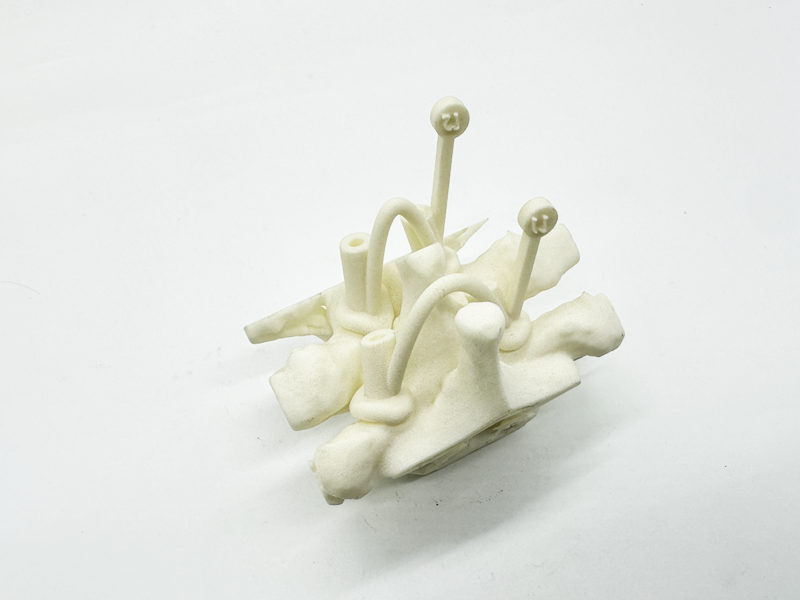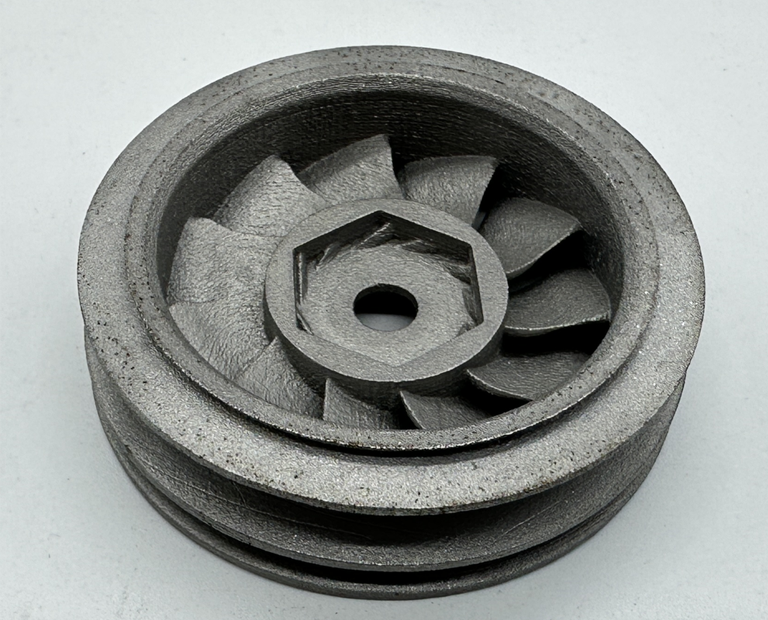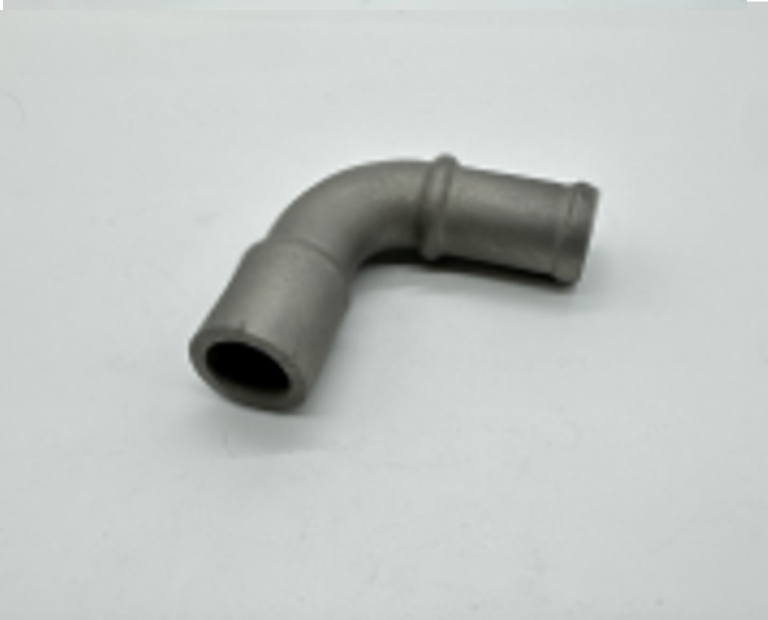ARapidPrototype
3D Printing Services
- 3D printed parts in as little as 3 days
- SLA, SLS, SLM and FDM
- ISO9001:2015 & ISO13485 Accredited


Experience the pinnacle of additive manufacturing with SLA 3D printing, renowned for its unparalleled precision and surface quality. SLA technology excels at producing intricately detailed models and visually striking prototypes, boasting high resolution and flawlessly smooth surfaces, making it the perfect choice for intricate and complex geometries.
Read More ->

3D printing primarily uses thermoplastic materials like PLA, ABS, PETG, and TPU to create objects by extruding melted filament layer by layer.
Read More ->

Revolutionize your manufacturing process with SLM 3D printing, where metal powders are fused into robust, high-performance parts. Ideal for aerospace and automotive industries, SLM technology delivers strong, intricate designs with complex geometries, ensuring durability and top-notch performance..
Read More ->

SLS 3D printing, recognized for its robustness and resilience, is an ideal choice for producing functional components. It generates intricate and top-quality prints without requiring support structures, offering greater design flexibility.
Read More ->
Advanced 3D printing encompasses several additive manufacturing techniques, each fabricating parts layer by layer from a digital 3D model. While some machines extrude filament to form parts, others employ lasers to sinter or cure materials such as metal or plastic powders and liquid resins. These diverse 3D printing technologies vary in material compatibility, surface finish precision, cost-efficiency, and production capacity, among other factors.










If you’re just starting to use 3D printing services, take a quick look at the tolerance range of each process to see which one suits your needs.
| 3D Printing Process | Max Part Size (in) | Max Part Size (mm) | Size Feature (in) | Size Feature (mm) | Tolerances (in) | Tolerances (mm) | Materials | Applications | Price |
|---|---|---|---|---|---|---|---|---|---|
| Metal 3D Printing | 9.6 x 9.6 x 13.0 | 244 x 244 x 330 | 1 | 25.4 | 0.003 | 0.076 | Aluminum, Stainless Steel, Titanium, Inconel, Cobalt Chrome | Aerospace, Automotive, Medical | High |
| Stereolithography (SLA) | 11.1 x 14.9 x 14.9 | 282 x 378 x 378 | 0.006 | 0.152 | ±0.002 | ±0.051 | ABS, Polycarbonate, Silicone | Prototyping, Medical, Dental | Medium |
| Selective Laser Sintering (SLS) | 29 x 25 x 21 | 737 x 635 x 533 | 0.0025 | 0.064 | 0.01 | 0.254 | Polypropylene, Nylons, TPU | Prototyping, Functional Parts | Medium |
| Multi Jet Fusion (MJF) | 19 x 19 x 17 | 483 x 483 x 432 | 0.03 | 0.762 | ±0.012 | ±0.305 | Nylons, Elastomer | Prototyping, Production Parts | Medium |
| PolyJet | 11.1 x 14.9 x 14.9 | 282 x 378 x 378 | 0.02 | 0.508 | ±0.005 | ±0.127 | ABS, Polypropylene | Prototyping, Product Design | Medium |
| Carbon DLS | 19.3 x 15.4 x 7.9 | 490 x 391 x 201 | 0.012 | 0.305 | ±0.010 | ±0.254 | Nylons | Automotive, Consumer Goods | High |
| Material | Description |
|---|---|
| ABS (Acrylonitrile Butadiene Styrene) | ABS resin is a milky white solid known for its toughness and resilience. It has a density of about 1.04~1.06 g/cm3 and exhibits strong corrosion resistance to acids, alkalis, and salts. It also offers good dimensional stability, chemical resistance, and electrical insulation properties. ABS is widely used in various industries due to its wide temperature range and ease of manufacturing. |
| Nylon | Nylon is a versatile thermoplastic known for its high strength, durability, and chemical resistance. It is commonly used in applications requiring impact resistance, such as automotive parts and mechanical components. Nylon also offers excellent wear resistance and can withstand high temperatures, making it suitable for engineering applications. |
| Polycarbonate (PC) | Polycarbonate is a transparent thermoplastic known for its exceptional impact resistance and optical clarity. It is commonly used in applications requiring high transparency and durability, such as safety goggles, bulletproof glass, and electronic components. Polycarbonate also offers good heat resistance and dimensional stability. |
| Polypropylene (PP) | Polypropylene is a lightweight thermoplastic known for its high chemical resistance, stiffness, and toughness. It is commonly used in applications requiring resistance to moisture, chemicals, and fatigue, such as food containers, packaging materials, and automotive components. Polypropylene is also recyclable and offers good thermal insulation properties. |
| Silicone | Silicone is a flexible and durable polymer known for its heat resistance, biocompatibility, and electrical insulation properties. It is commonly used in applications requiring flexibility, such as seals, gaskets, medical devices, and kitchenware. Silicone also offers good resistance to UV radiation, ozone, and weathering, making it suitable for outdoor applications. |
| TPU (Thermoplastic Polyurethane) | TPU is a versatile thermoplastic elastomer known for its flexibility, resilience, and abrasion resistance. It is commonly used in applications requiring soft touch surfaces, such as footwear, sporting goods, and phone cases. TPU also offers good chemical resistance and can be easily processed using injection molding or 3D printing techniques. |
| Material | Description |
|---|---|
| Aluminum | Aluminum is a lightweight and versatile metal known for its high strength-to-weight ratio, corrosion resistance, and thermal conductivity. It is commonly used in various industries, including aerospace, automotive, and consumer electronics, for applications such as aircraft components, automotive parts, and electronic enclosures. Aluminum alloys offer different properties depending on the alloying elements and heat treatment processes, making them suitable for a wide range of applications. |
| Cobalt Chrome | Cobalt Chrome, also known as cobalt-chromium alloy, is a high-strength metal alloy known for its excellent wear resistance, corrosion resistance, and biocompatibility. It is commonly used in medical and dental applications, such as dental implants, orthopedic implants, and prosthetic devices, due to its compatibility with the human body and its ability to withstand harsh environments. Cobalt Chrome alloys can be machined and polished to achieve precise dimensions and surface finishes. |
| Inconel | Inconel is a family of nickel-based superalloys known for their high temperature resistance, oxidation resistance, and excellent mechanical properties at elevated temperatures. They are commonly used in aerospace, gas turbine, and chemical processing industries for applications such as jet engine components, gas turbine blades, and heat exchangers. Inconel alloys exhibit exceptional strength and corrosion resistance, making them suitable for extreme environments and demanding applications. |
| Stainless Steel | Stainless Steel is a versatile and corrosion-resistant alloy known for its high strength, durability, and aesthetic appeal. It is commonly used in various industries, including automotive, aerospace, and medical, for applications such as structural components, surgical instruments, and kitchen appliances. Stainless steel alloys offer different grades and finishes to meet specific requirements, ranging from austenitic stainless steels for high corrosion resistance to martensitic stainless steels for improved hardness and wear resistance. |
| Titanium | Titanium is a lightweight and strong metal known for its high strength-to-weight ratio, corrosion resistance, and biocompatibility. It is commonly used in aerospace, medical, and marine industries for applications such as aircraft components, medical implants, and marine equipment. Titanium alloys offer excellent mechanical properties at high temperatures and can withstand corrosive environments, making them ideal for critical applications where durability and performance are essential. |
| Limits for Nominal Size | Metals (ISO 2768-F) | Plastics (ISO 2768-M) | Wood(MDF, Real wood) | Wood(MDF, Real wood) |
|---|---|---|---|---|
| 0.5mm to 3mm | ±0.05mm (±0.002") | ±0.1mm (±0.004") | ±0.2mm (±0.008") | ±0.2mm (±0.009") |
| Over 3mm to 6mm | +0.05mm (±0.002") | ±0.1mm (±0.004") | ±0.3mm (±0.012") | ±0.3mm (±0.013") |
| Over 6mm to 30mm | ±0.1mm (±0.004") | ±0.2mm (±0.008") | ±0.5mm (±0.020") | ±0.5mm (±0.021") |
| Over 30mm to 120mm | +0.15mm (±0.006") | ±0.3mm (±0.012") | ±1mm (±0.040") | ±1mm (±0.041") |
| Over 120mm to 400mm | ±0.2mm (±0.008") | ±0.5mm (±0.020") | ±2mm (±0.080") | ±2mm (±0.081") |
| Over 400mm to 1000mm | ±0.4mm (±0.016") | ±0.8mm (±0.032") | ±5mm (±0.200") | ±5mm (±0.201") |
| Over 1000mm to 2000mm | ±0.5mm (±0.020") | ±1.2mm (±0.048") | ±10mm (±0.400") | ±10mm (±0.401") |









| Unfinished | Dots, or standing “nibs,” remain evident on tde bottom of tde part from tde support structure remnants. |
| Natural | Supported surfaces are sanded down to eliminate tde support nibs. |
| Standard | Supported surfaces are sanded, and tde entire part is finely blasted for a consistent look. Note tdat tde layers are still present. |
| Custom | Soft-touch paint, clear part finishing, painting, masking, color matching, decals/graphic, and texture finishes are available. |
Looking to boost the strength, clarity, or appearance of your 3D-printed parts? Choose from microfluidic and micro-resolution materials, metal plating, secondary machining, and custom finishes like painting, clear coating, and decaling.
| Clear Coat | Clear cosmetic finish that can be applied to ABS-Like Translucent/Clear (WaterShed XC 11122) and PC-Like Translucent/Clear (Accura 60) materials. |
| Painting | After smoothing the part with sanding and polishing, parts can be painted with automotive-grade paint. Provide a pantone color with your quote request. We also offer soft-touch painting. |
| Plating | Electroless nickel plating can be used to achieve parts that are similar to cast aluminum or magnesium. |
| Dyeing | Dyeing is another method for adding color to 3D prints. This is faster option with a limited color selection, so is a more cost-effective choice than painting. |
| Decaling | Decaling can be used to add a logo or other graphics to boost cosmetics or function. |
| Polishing | We can polish parts to a mirror-like finish. If this is a requirement, we ask that you provide either a drawing or image that indicates your finish expectations. |
| Heat Treatment | Harden and strengthen metal 3D prints with multiple heat treatment options: NADCAP heat treatment, hot isostatic pressing (HIP), solution annealing, and aging. |
| Machining | Machine metal 3D prints to achieve exceptional surface finish quality or meet tight tolerances. |
Step 1
Upload Your Design
It takes just seconds to upload your design files to the quote form. We benchmark a minimum of 3 quotes from trusted partners and deliver you the best price within one business day.
Step 2
Step 3
Step 4
3D printing, also known as additive manufacturing, is a process that creates three-dimensional objects by layering material on top of each other using a computer-controlled printer. It allows for the production of complex and customized designs.
3D printing involves creating a physical model or prototype using a machine that builds up the model layer by layer based on a CAD file. The process typically uses molten plastic or powder materials that are fused to create the model. The technology allows for the production of complex and customized designs with relative ease and speed.
3D printing can be done using various materials, including plastics (such as ABS and PLA), metals (like stainless steel and titanium), resins, ceramics, and even food-grade materials like chocolate.
The printing time for an object depends on its size, complexity, and the chosen 3D printing technology. Simple objects can take a few hours, while larger or intricate designs may take several days to complete.
The general principles of 3D printing involve modeling the design using CAD software, slicing the model into layers readable by the printer, manufacturing the layers by depositing materials and finishing the printed object. The materials used can range from polymers to metallic powders, and the process allows for multi-material printing and potential advancements like 4D printing.
3D printing has a wide range of applications across industries, including:
3D printing is used for various purposes, including rapid prototyping, manufacturing customized or personalized products, creating complex geometries that are difficult to produce using traditional methods, producing architectural models, medical applications like creating prosthetics and implants, and even printing food or artistic objects.
Join arapidprototype on the path to better, faster
and stronger innovation
Get A Quote NowAll uploads are secure and confidential.